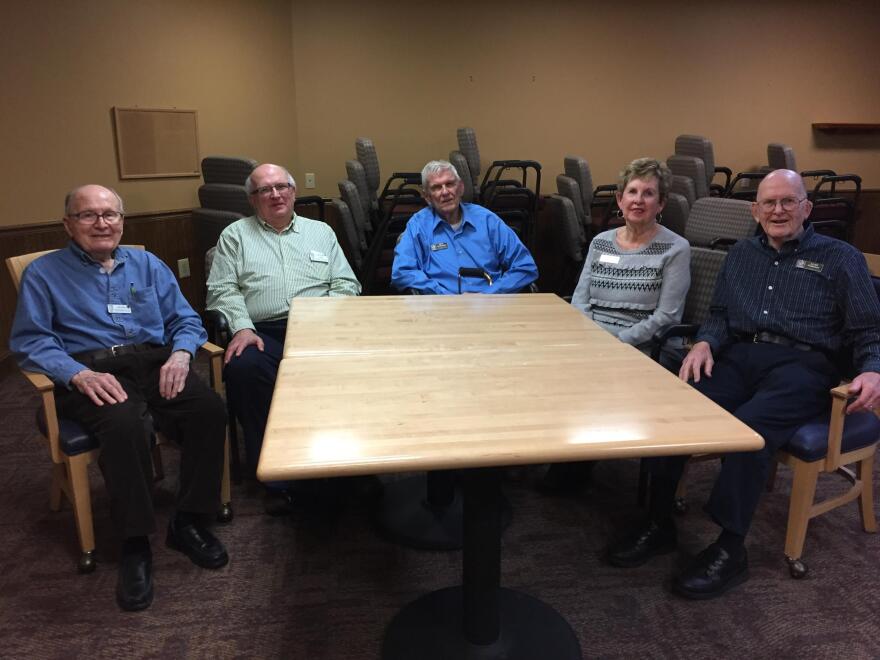Firestone Country Club, Goodyear Heights and the B.F. Goodrich smokestacks are among the many reminders that the rubber industry once dominated the eyes, ears and nose of almost every Akronite.
But why did the industry take root in Akron, thousands of miles from the nearest rubber tree and hundreds of miles from the auto industry?
Frank Smrdel, a history buff, has spent most of his life in Northeast Ohio and contributed to several books about the region. He asked WKSU’s “OH Really?” series this question: “I was just curious as to why all the rubber firms founded their headquarters in Akron, Ohio?”
Getting Rolling
The history of tires and rubber in Akron was explored in the 1998 documentary “https://vimeo.com/joshuatreeproductions" target="_blank">Wheels of Fortune,” produced by Dave Lieberth. Lieberth is past chair of the Board of the Summit County Historical Society and author of three books on Akron history.
He says the first large rubber company was established in Akron in 1870 by Dr. Benjamin Franklin Goodrich, who hailed from upstate New York. Goodrich went to medical school at what is now Case Western Reserve University.
“When he returned to practice in Melrose, New York, he acquired a rubber company,” Lieberth says. “And with a partner, he pretty much was running it into the ground when he realized he had no competitive advantage being east of the Allegheny Mountains.”
But a trip west to his old stomping grounds was initially a flop.
“Cleveland rejected him,” Lieberth says. “Not overtly, but at that time, John D. Rockefeller was just getting started in oil. It was a major steel-producing area. And rubber just didn’t seem like it afforded much for the future.”
And that’s when Goodrich was handed a flyer from the recently formed Akron Board of Trade. The city already had thriving companies producing mowers and reapers, oats, iron and even matches. And it had several things that Dr. Goodrich decided were perfect for his floundering rubber company.
“Not raw rubber – that came from the Amazon jungles at the time,” Lieberth says. “But it had labor. It had water – abundant, cheap water – which was important. It had the Ohio & Erie Canal. And at that time, we had a crisscross of railroads through the city.”

Rise Of Rubber
The Board of Trade helped finance Goodrich’s move to Akron. His company was soon making hoses, then bicycle tires and eventually thousands of rubber products. Just as the computer industry would flock to Silicon Valley a century later, the rubber industry began to grow in and around Akron as B.F. Goodrich became more and more successful.
The biggest company – and the one still headquartered there – was started by the Seiberling Brothers.
“They started a company that they named after the inventor of vulcanization, Charles Goodyear,” Lieberth says. “Charles Goodyear never set foot in Akron, even though there’s a statue of him right across from City Hall on South High Street.”
Other recognizable companies soon followed suit.
“Harvey Firestone knew about Akron because he was a salesman from Columbiana County via Detroit and Chicago,” Lieberth says. “He came to Akron and started buying tires and then re-selling them. He had a friendship with Henry Ford and in 1903 he decided he would start manufacturing his own tires.”
Locals got into the business, as well.
“The M. O’Neil Company was a large, downtown retail store [with] a variety of products. William O’Neil – son of Michael – decided that he wanted to go into business. He had experimented with being a Firestone dealer himself, out west. And he was primarily a salesman. And he came back to Akron and realized that there was an opportunity here. His father staked him in the rubber business, and he founded the General Tire and Rubber Company.”

Rubber Capitol Of The World
By the 1910s, Akron was the fastest growing city in the United States, attracting thousands of people in search of good jobs. The population continued to grow and eventually hovered just under 300,000 people until the 1980s.
"We were the Rubber Capitol of the World,” remembered Alan Peterson.
Peterson graduated from college and took a job at General Tire in 1954.
“Goodyear was the largest. Firestone always tried to beat them up,” Peterson says. “General Tire was Number Five. And Mohawk Rubber Company – their factory was next to Goodyear’s – they advertised that they were next to the largest rubber company in the world.”
But it wasn’t all glamorous.
“I first started off mixing rubber [and] milling rubber,” Peterson says. “I would get home [and] there would be black in my pores and I could never get it out. I had to take off my clothes and my shoes before I came into the house. And that was dirty, dirty, thankless work.”
Jane Whitehead – who started working at B.F. Goodrich as a chemist in 1963 – agreed.
“I still remember what carbon black smells like: all pervasive,” Whitehead says.
A different smell and taste from those days stays with Henry Menapace, who remembers heavy traffic and restaurants open round-the-clock while he worked at Goodyear as a chemist starting in 1962.
“I remember a restaurant across Market Street called Greasy Gus,” Menapace says.
Greasy Gus is long-gone, and so are most of the tire and rubber operations. For over a century, though, they thrived in Akron.



